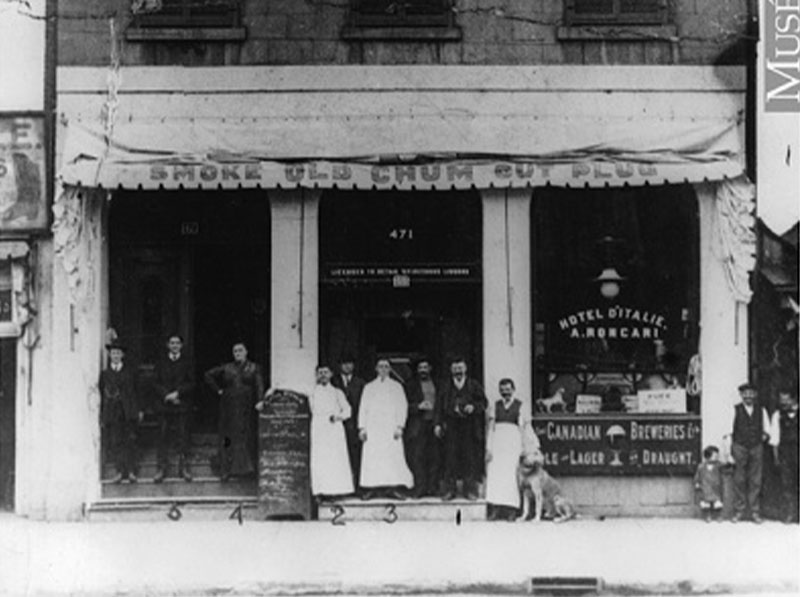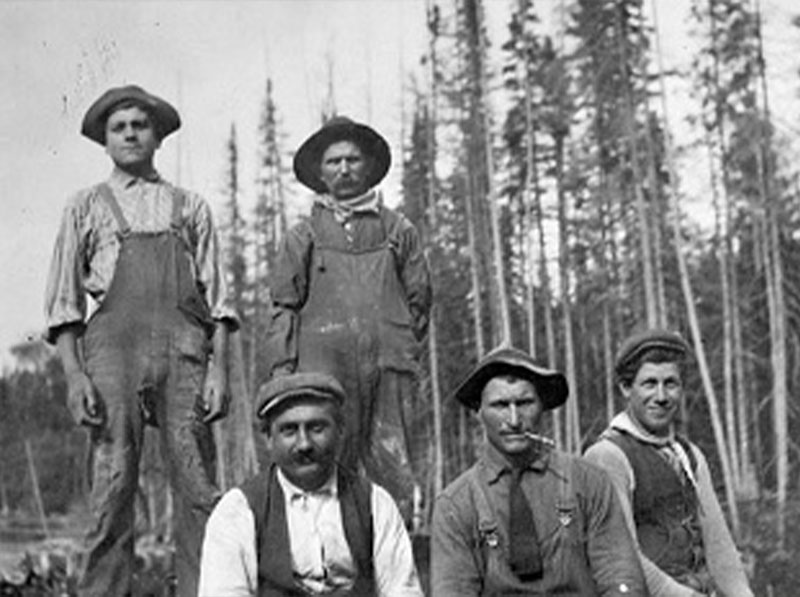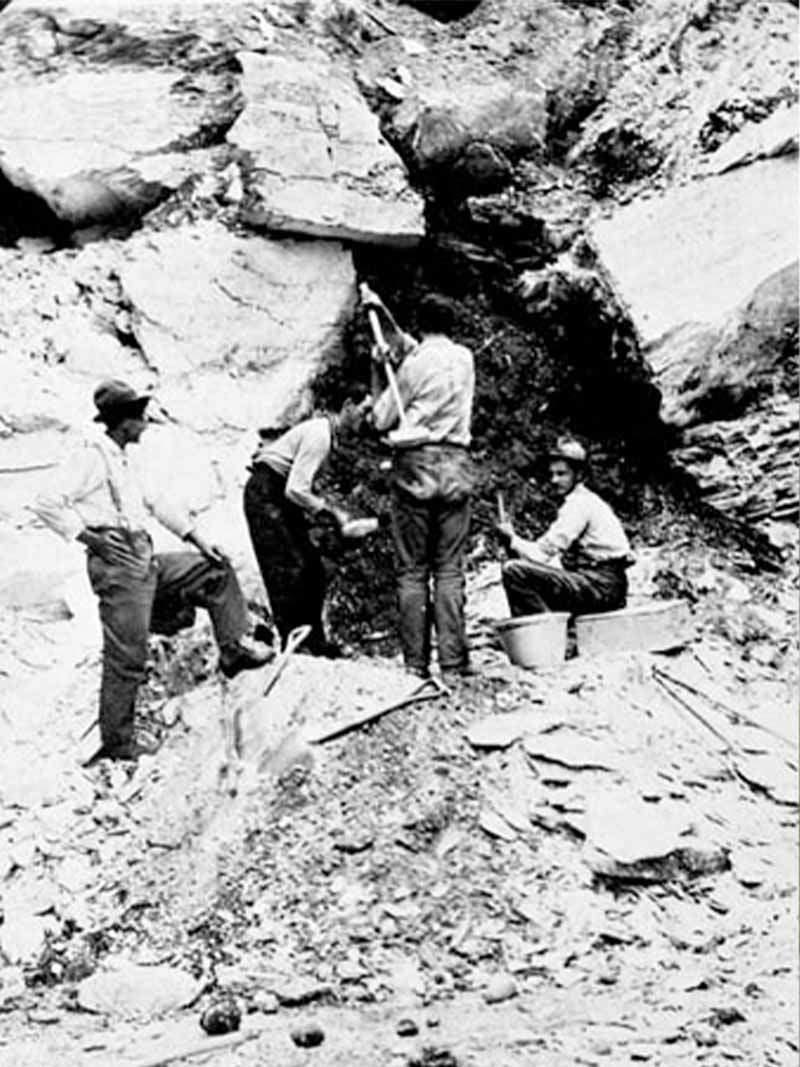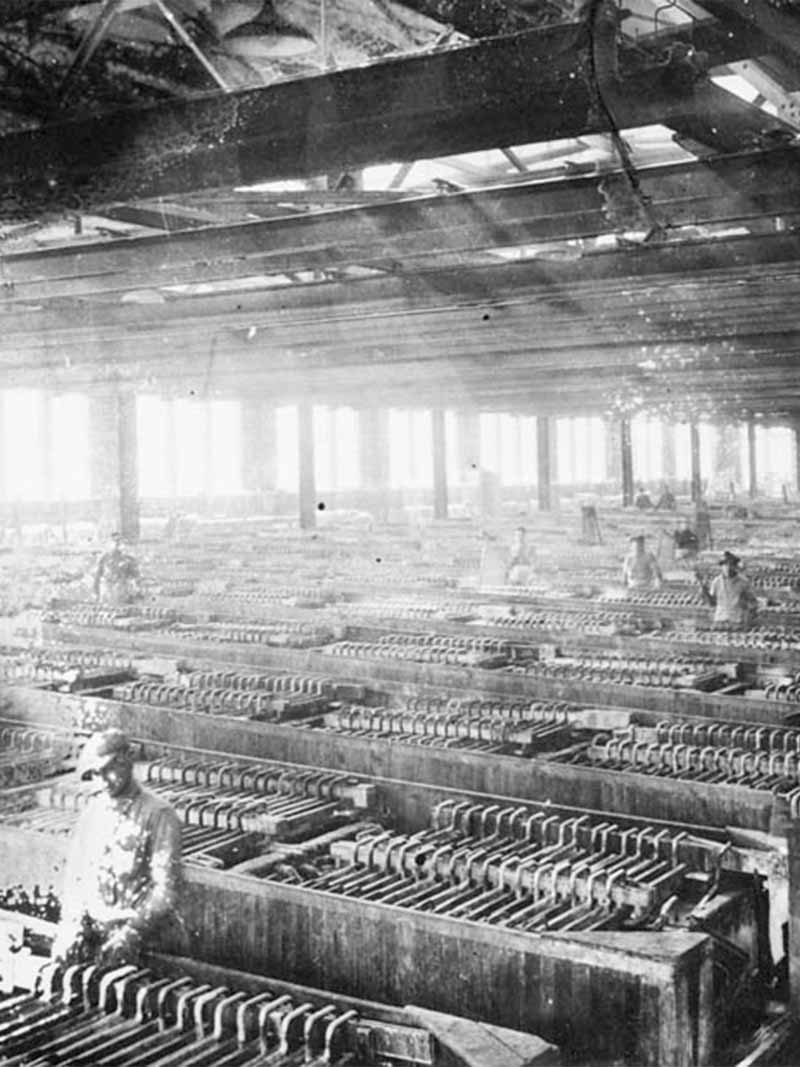Experience of Italian Sojourners National Historic Event
The Experience of Italian Sojourners was designated a national historic event in 2011.
Historical importance: From the turn of the 20th century to the First World War, Italian sojourners played a pivotal role in the development Canada’s infrastructure as prolific builders, miners and manufacturers

© Musée McCord Museum / MP-1983.94.1

© Library and Archives Canada / Frontier College / C-046161
Commemorative plaque: 1100 Canadiens-de-Montréal Avenue, Montréal, QuebecFootnote 1
The Experience of Italian Sojourners
In the late 19th and early 20th century, tens of thousands of Italian men came to Canada in search of temporary employment. Often recruited by labour agents called padroni, these sojourners did backbreaking work in difficult conditions, producing steel, mining coal, and building essential infrastructure, such as railways, bridges, and canals. Despite discrimination, many decided to stay in Canada and arranged for their families and compatriots to join them. In cities across the country, they helped establish vibrant “Little Italy” neighbourhoods, which have become a lasting feature of the Canadian urban experience.
The Experience of Italian Sojourners
In the late 19th and early 20th centuries, tens of thousands of Italians came to Canada as “sojourners” – migrant workers who intended to find temporary employment, earn money, and return to their home country. Typically recruited by labour agents called padroni, these workers became a dominant workforce in a number of areas, including railway construction, manufacturing steel, and mining. The demand for their labour and the outbreak of the First World War motivated a significant number of the nearly 120,000 Italians then in Canada to stay. They then arranged for relatives and compatriots in the Old Country to join them. Out of these migrations emerged the numerous “Little Italy” neighbourhoods and Italian Canadian communities that are found throughout Canada.

© Library and Archives Canada / C-046155

© Library and Archives Canada / Allan Tognotti / C-080573
This first large-scale wave of Italian immigration to Canada was motivated both by a deteriorating economic situation in Italy and by the allure of booming economies in North America. Young male Italian agricultural workers and small-scale farmers, many from the southern region of Calabria, came to Canada in search of temporary work, some crossing the Atlantic several times in pursuit of their goals. They were often recruited by padroni, who were typically former labourers who had established themselves as informal intermediaries between potential immigrants and Canadian companies. Others came as part of chain migration through the assistance of established workers.
In turn-of-the-century Canada, an explosion in economic growth meant that there was considerable work available to these incoming Italian labourers. Canadian industrialists and major employers needed large pools of highly mobile and unskilled labour. Working within a context where government policy discouraged Italian immigration in general, and southern Italians in particular, Canadian companies relied on patroni to recruit seasonal workers from Italy or the United States, and then to assemble and distribute them to workplaces throughout Canada. Most Italian labourers worked for Canadian railway companies, but they were consistently found wherever there was labour-intensive seasonal work, building railways, bridges, canals, dams, and streetcar lines, digging sewers, manufacturing steel, and mining coal, ore, and silver. Poor working conditions, backbreaking work, and other challenges meant that the experience of Italian sojourners was one of constraint and hardship; however, their experience was one of agency for a better life in Canada.
During this period, about 199,770 Italians entered Canada, primarily via the United States. Roughly 80 percent were sojourning seasonal workers. Others settled in cities, setting up boarding houses for new immigrants or seasonal workers and founding newspapers and organizations, thereby laying the foundations for the development of Italian Canadian communities and “Little Italies” throughout Canada.
This press backgrounder was prepared at the time of the Ministerial announcement in 2017.
The National Program of Historical Commemoration relies on the participation of Canadians in the identification of places, events and persons of national historic significance. Any member of the public can nominate a topic for consideration by the Historic Sites and Monuments Board of Canada.
- Date modified :